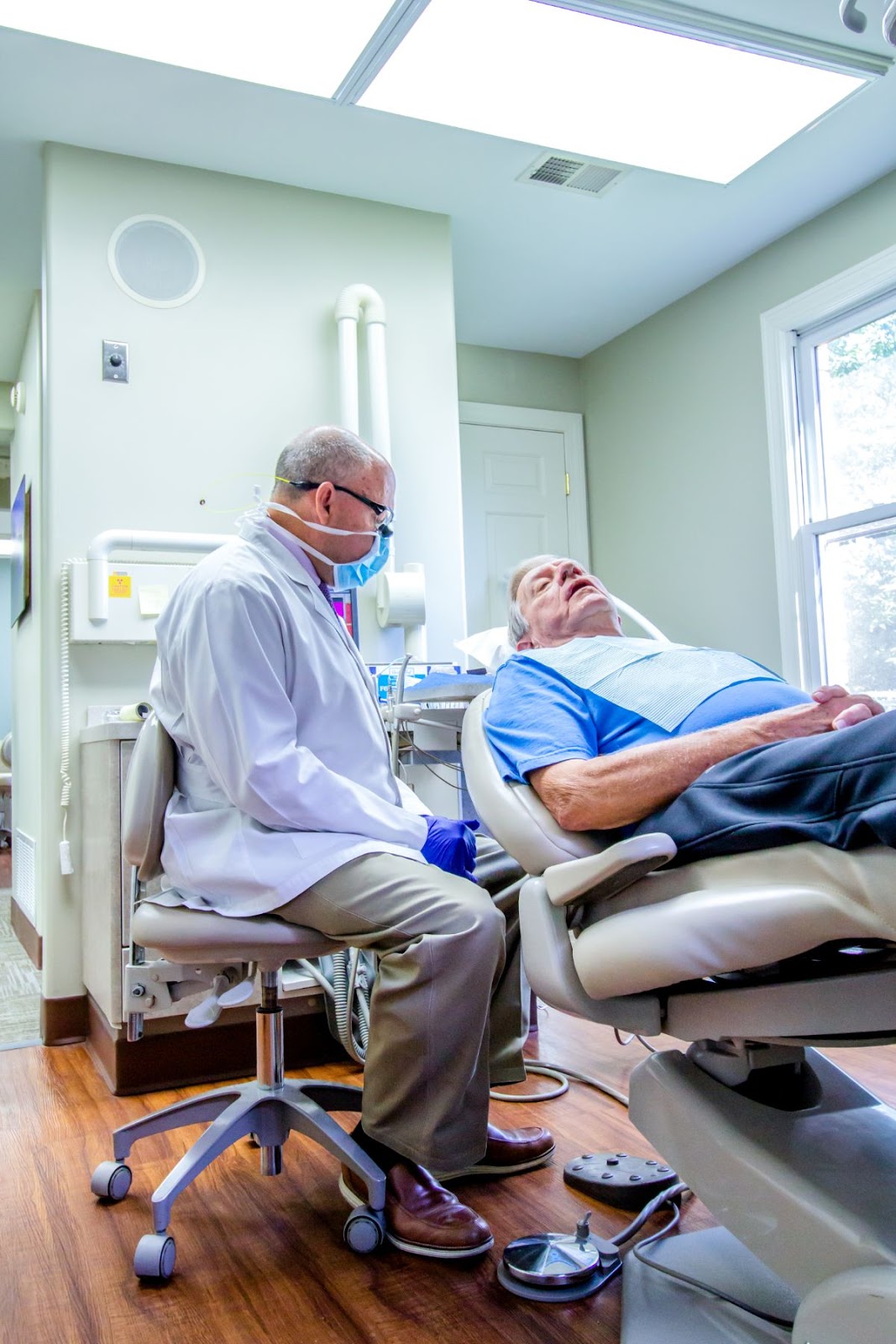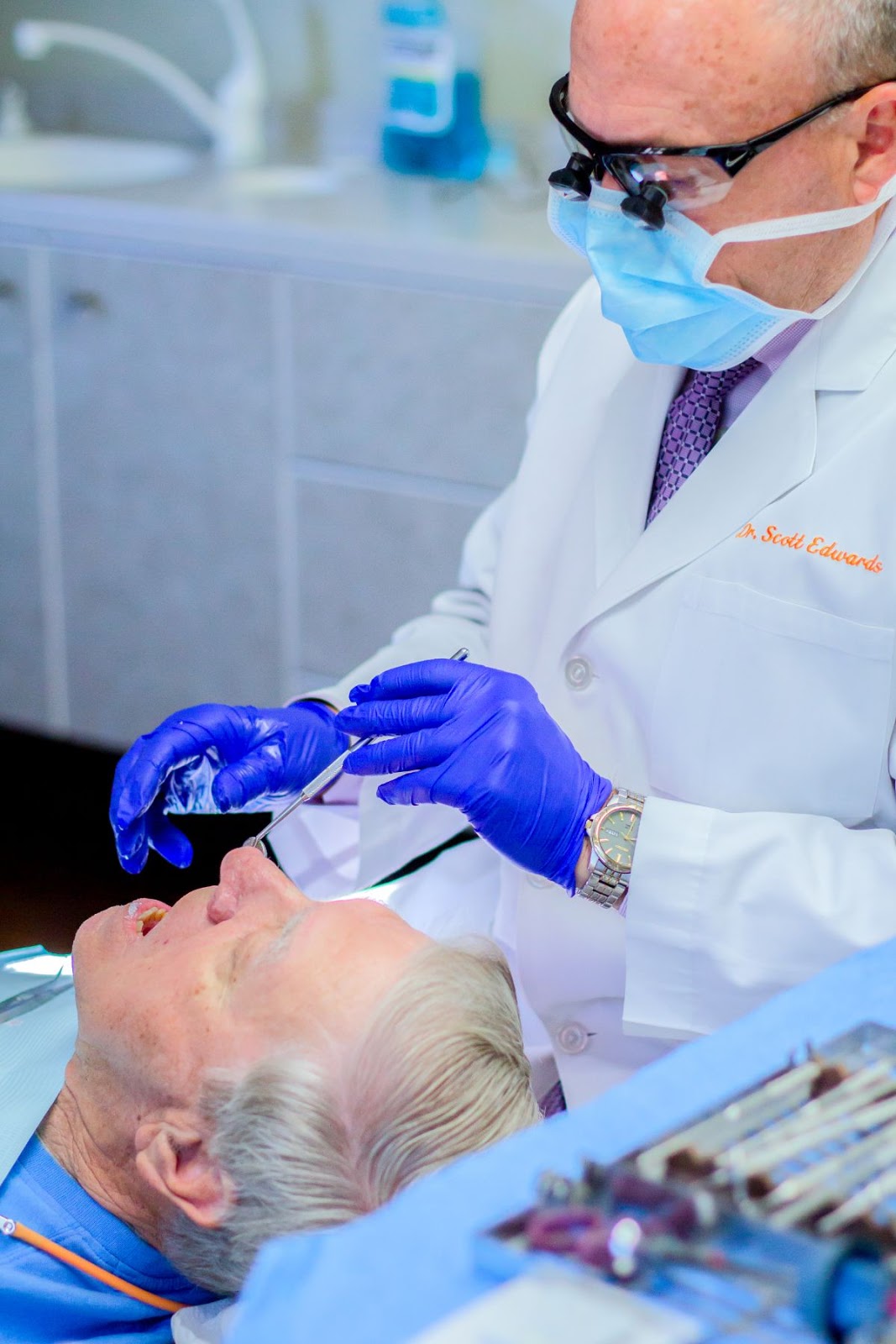Pain in the jaw area is a common complaint in dental offices across the country. While there can be many possible causes for this discomfort, one we frequently encounter is temporomandibular joint disorder, often abbreviated as TMD. What is TMD? How can it be treated? TMD is a broad term that describes the dysfunction that can happen when the muscles and joints of the jaw aren’t working properly. Because they’re full of complex nerve endings, even a minor problem between them can result in symptoms that range from mild to severe. While TMD affects millions of Americans every year, it’s still a bit of a mystery to most people. Let’s take a closer look at what TMD is and how we can treat it!
But first…is TMJ the same thing as TMD?
We’ll tackle this question before we get into more information on TMD. Although the abbreviations are used interchangeably all the time, TMJ and TMD are not the same. In fact, the TMJ isn’t an illness or disorder at all! It stands for temporomandibular joint, the hinge points that are located in front of the ears and connect the jawbones to the head. The TMJ is a pretty amazing multitasker—it can glide, rotate, and act as a powerful hinge all at once, giving us the ability to speak and chew our food properly.
A number of complex protectors surround the TMJ. These tendons, muscles, and joint pads work well together most of the time, but occasionally something gets knocked off course and that’s where TMD enters the picture. So the TMJ and TMD are connected in this way, but can’t be used to mean the same thing. What is TMD? How can it be treated?

What are the signs and symptoms of TMD?
The TMJ is one of the most used joints in the body, which means TMD can produce a wide and varied range of symptoms. Every case is different, so customized care is an absolute must! What is TMD? Some patients will only experience symptoms on one side of the face, while others may have problems with both sides. Some will have a few mild symptoms that rarely show up, while others will deal with a long list of lingering symptoms that take years to resolve. Some of these symptoms may include:
- pain or tenderness in the face, jaw joint, neck, or shoulders
- pain in or around the ear when chewing or speaking
- difficulty opening the mouth wide
- jaws that get stuck or locked in an open- or closed-mouth position
- popping or other noise in the jaw joint when you open or close your mouth
- popping or other noise in the jaw when chewing
- a “tired” feeling in the face
- difficulty chewing
- feeling like your upper and lower teeth don’t fit together properly
- swelling on the side of your face
- ringing or stuffy ears
- migraines or headaches
Many of these symptoms can mimic common dental issues, like tooth decay and gum disease. They can also be similar to those experienced with certain medical conditions, such as arthritis. If you’ve had any signs of TMD, we encourage you to speak to an experienced dentist like Dr. Edwards and Dr. Prince about your concerns.
What causes TMD?
The underlying cause of every TMD case is a problem with the muscles of your jaw, or with the parts of the joint itself. This can come from a variety of sources, including:
- an injury to your jaw, the joint, or the muscles of your head and neck
- grinding or clenching your teeth
- movement of the soft cushion or disc between the ball and socket of the joint
- arthritis in the TMJ
- stress
- a bad bite or misaligned jaw
Any of these can place undue stress on the sensitive components of the TMJ. Over time, this may lead to pain and sensitivity throughout the face, neck, shoulders, back, and arms.
How is TMD diagnosed?
When you visit our Midtown or East Memphis office, we’ll use the latest dental techniques and technology to pinpoint the source of any suspected TMD. There are several methods for accurately diagnosing this disorder, including:
- measuring aspects of the teeth and jaw
- determining the jaw’s proper resting position
- mapping the movement of the jaw during speaking and eating
Once we find the source of your TMD and properly diagnose you, our doctors will be able to devise an appropriate treatment plan for your particular case.

What treatment options are available for TMD?
Fortunately, many people with TMD have mild or infrequent symptoms that improve on their own over time without the need for treatment. Most patients won’t need aggressive treatment, even if their TMD symptoms become more persistent or serious. If you’re experiencing minor symptoms, there are several simple ways you can relieve them from home.
- Eat soft foods
- Apply ice or moist heat to affected areas
- Avoid extreme jaw movements like wide yawning and chewing gum
- Take smaller bites of your food
- Alternate chewing between both sides of your mouth
- Explore stress-relief techniques
If treatment is necessary, we prefer to use conservative and reversible methods whenever possible. These are non-invasive and won’t produce any permanent changes in the structure or position of the jaws and teeth. An example of this is night guards, sometimes called occlusal guards. These custom-made mouthguards create a physical barrier between your upper and lower teeth, reducing TMD symptoms caused by teeth grinding and keeping the teeth from being worn down prematurely.
Severe cases of TMD may require more invasive treatment. For instance, we may need to replace missing teeth, using crowns and bridges to balance out the biting surfaces of the teeth. If bite correction is necessary to minimize or eliminate TMD symptoms, we may recommend orthodontic treatment like Invisalign aligners to achieve this.
Tackle your TMD with Scott Edwards Cosmetic and Family Dentistry
Leaving TMD untreated over time can cause inflammation, swelling, and may contribute to other dental problems, such as premature tooth wear and periodontal disease. If you’ve been experiencing any symptoms of TMD, we encourage you to get in touch and schedule a consultation with Dr. Edwards or Dr. Prince.
